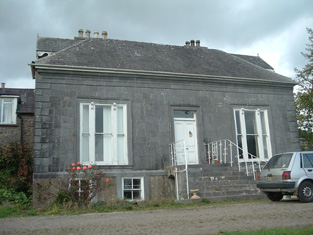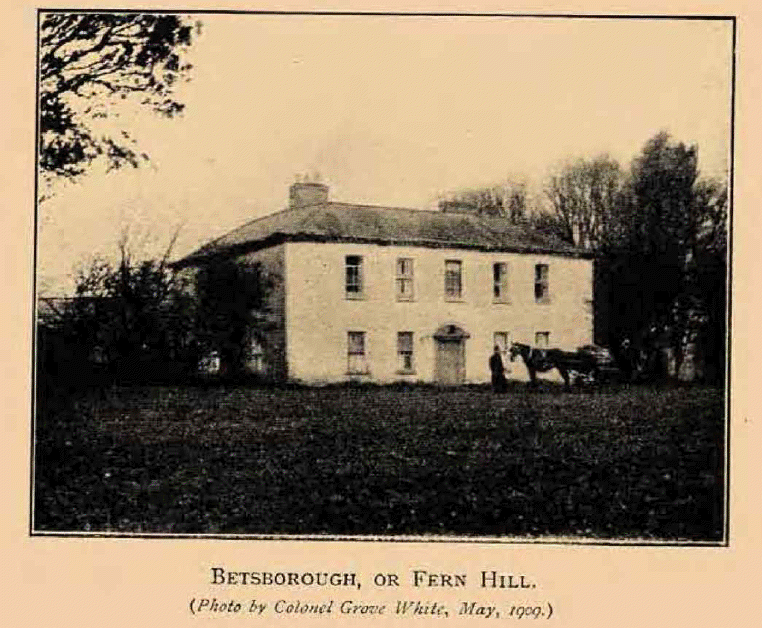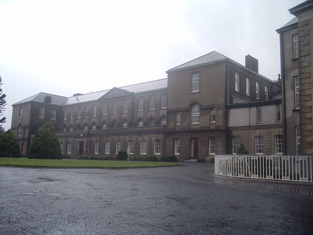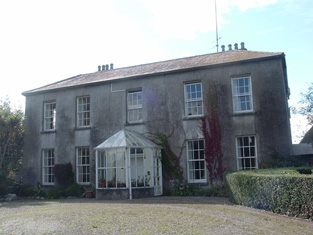Aldworth
Houses within 5km of this house
Displaying 12 houses.
Houses within 5km of Aldworth
Displaying 12 houses.
| House name | Description | |
|---|---|---|
| Waterloo | Reputedly built circa 1815 for Henry Longfield, fifth son of John Longfield of Longueville, following his marriage to Mary Powell, heiress of Sea Court, county Cork. At the time of Griffith's Valuation it was held by Henry Longfield in fee and valued at £37. Henry's son John Powell Longfield sold Waterloo to his first cousin Richard Longfield of Longueville who left it to his third son Augustus Henry Longfield. Augustus H. Longfield extended the building. The house was sold to Mr E. W. Hope-Johnstone in 1946. It is still a fine residence. |

|
| Summerville | Originally a Purdon house situated on the Coote estate and described by Smith as a "neat lodge" in 1750. It was home to members of the Chapman and Nason families. Occupied by John Nicholas Wrixon in 1837. Valued at £14 in the early 1850s when it was occupied by Kenny Herbert. Still occupied and surrounded by mature woodland. |

|
| Woodpark | This property belonged to the Wrixon family in the 18th century. In 1814 it was occupied by T. Callaghan. In the mid 19th century James Carmichael was in residence. He held it from the representatives of Charles D. Purcell. The buildings were valued at £11.10 shillings. Hajba writes that the Carmichaels later purchased the property from the Purcells. It is still an occupied residence. | |
| Danesfort | According to Hajba built by James Butler Stopford in the very early 19th century, replacing an earlier cottage. Stopford sold his interest to his brother-in-law, Captain Edmund Lombard a few years later. At the time of Griffith's Valuation it was occupied by the Captain's nephew, James Hunt, who held the property valued at £27.15 shillings from Christopher Crofts. In 1944 the Irish Tourist Association survey noted that it was the residence of Stopford Hunt. The house was destroyed by fire in the 1950s. | |
| Clydaville | Mrs Callaghan lived in this houses in 1814 and Mrs Sankey in 1837. Held by Hugh Delacour from Charles Haynes in the early 1850s when the house was valued at £15. The residence of the O'Connor family in the 20th century. Hajba records that the house was demolished in April 2002. | |
| Woodfort | Described in 1750 as "an handsome house, with elegant plantations" inhabited by Simeon Marshal, Surveyor General of Munster. Occupied by Ousley esq in the 1770s and 1780s, this house was the home of Richard Perry in 1814 and of T. Ware in 1837. It was valued at £30 at the time of Griffith's Valuation and still held by Thomas Weir from Charles Haynes. Later the home of the Carroll-Leahy family. In 1944 the Irish Tourist Association survey reported that it was a novitiate for the Sisters of St. Francis. This house now functions as Mount Alvernia Hospital. |

|
| Lombardstown House | The seat for many years of the Lombard family, built in the mid 18th century. In 1750 Smith refers to the house as "lately built by James Lombard". From the 1830s it was leased to the Bolster family. George Bolster held the house valued at £15 plus a demesne of 101 acres from Lady Cotter in the early 1850s. The Bolsters remained in residence until the late 19th century when they sold their interest to Henry G. Smith. His descendants continue to occupy the house (Hajba). |

|
| Fern Hill | Smith records Cornelius Townshend as resident at Betsborough circa 1750. Hajba writes that it was a Townsend property from the early 18th century and birthplace of the United Irishman, Thomas Russell, executed in 1803. The house, on the outskirts of the village of Drommahane, was originally known as Bettesborough (or Besborough) and a Magner occupied a house of this name in 1837. The Reverend Philip Townsend held the house valued at £21+ from William Magner in the early 1850s. In June 1881 the house and demesne of Fernhill were advertised for sale. Barclay Corrie was the owner, holding on a lease dated 1863 from Richard John Perry to Michael Joseph Magnier. The house was demolished in the early 20th century and a new house built on the site. |

|
| Newberry Manor | This house was the seat of the Newman family in the 18th and 19th centuries. In 1786 Wilson refers to it as "Dromore, the seat of Mr. Newman". The house was valued at almost £49 in the mid 19th century and held by Adam Newman in fee. John R.B. Newman was resident in 1906. The house was burnt in June 1921 during the War of Independence when it was owned by John R. Pretyman Newman. It was rebuilt by the Newmans and then sold to the Poor Sisters of Nazareth as a nursing home. |

|
| Newberry House | This house was another Newman residence located in the parish of Kilshannig. In 1786 Wilson refers to Newberry as the residence of Colonel Newman, possibly the same man who was murdered in the house by his groom and an accomplice in 1816. John Newman held the property from Adam Newman at the time of Griffith's Valuation. The buildings were valued at £18.10 shillings. Post Griffith's Valuation the house became the home of the Swanzy family and it was they who built the present house incorporating the original one. The house was sold to the Footts in the 20th century. Also known as Kilshannig House. |

|
| Eden Hill | Situated on the Longfield estate and occupied by John Crosbie who held the house valued at £19.10 shillings from Joseph Carpenter. The Carpenter resided here from the late 18th century. Thomas Carmichael bought Carpenter's interest and advertised the sale of Eden Hill house and demesne in December 1856. Later the home of the Guerin family and in the late 20th century of the O'Callaghan family. |

|
| Millfort | This house was the home of the Foote family in the 18th century as Wilson refers to it as the seat of Mr. Foote in 1786. At the time of Griffith's Valuation the house was valued at £4.10 shillings, occupied by William Upplington and held from the representatives of George Foot. It appears to have fallen into ruin by the time the 25-inch Ordnance map was published in the 1890s and no trace remains now. |

